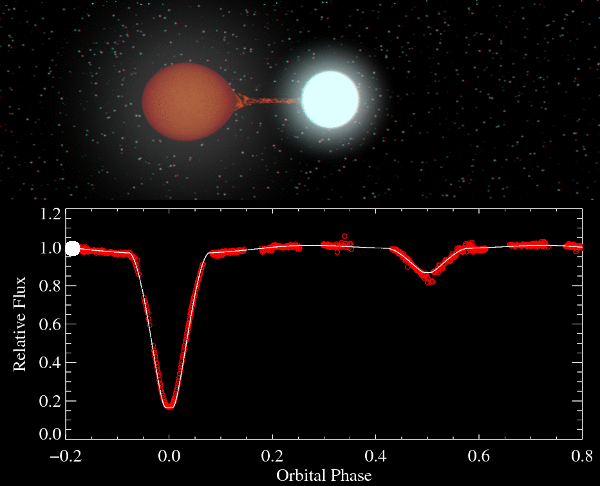 |
Department of Physics | AstroLab |
A Study of an Eclipsing Variable
A small percentage of stars vary in brightness periodically. So far over 100,000 have been catalogued. An important class of variable stars are the eclipsing variables. These are binary star systems whose orbital plane is orientated in such a way that each star is totally or partially eclipsed by the other during the orbital period. Well-known types include Algol variables, Beta Lyrae stars and W Ursae Majoris stars.

The aim of the project is to determine the light curve and hence the period of an eclipsing variable. By choosing variable stars with adjacent non-varying stars the light curve can be easily determined from measurements of the relative brightness. How well can the light curve and period be determined? Using archival and published data for this system is there any evidence for a change of period?
Rainer Wichmann's Nightfall programme will be used to model the system.
The J093010 Double Eclipsing Quintuple
The eclipsing contact-binary variable J093010 has a primary period of 0.2277d and a secondary period of 1.3054d. The light curve below was measured by Astrolab students Cameron and Dan, who derived a period decrease of 1.0+/-0.3 seconds per year for the system, and suggest that one or more components in the system both accrete mass and exhibit magnetic activity.

Project Notes Project References
| Back to the AstroLab Home Page | jrl | 2020-Jun-17 13:41:57 UTC |